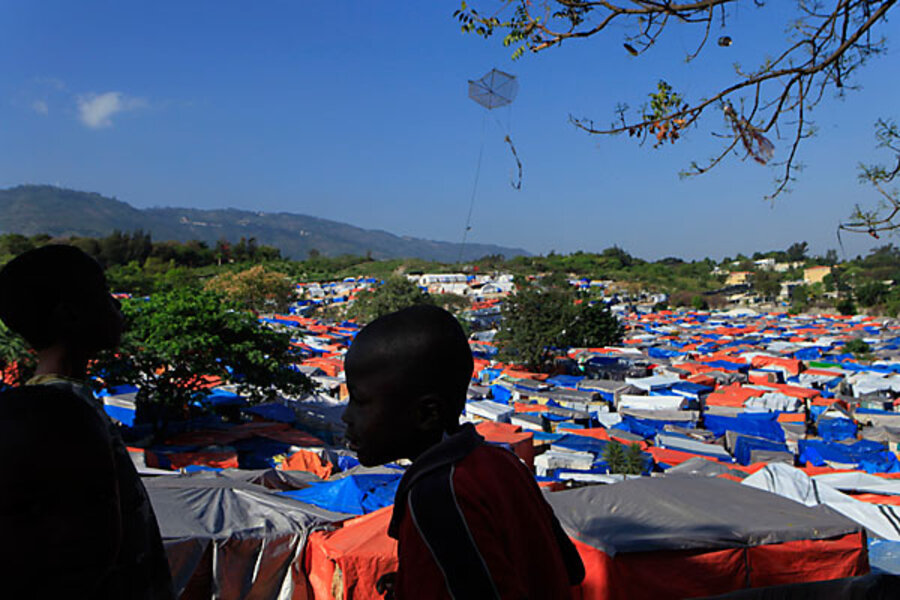Beyond Haiti relief, UN looks at building outside Port-au-Prince
Loading...
| Port-au-Prince, Haiti; and Mexico City
When the international community comes together Wednesday to pledge money to help Haitian relief efforts, high on the agenda will be immediate needs, such as a push to get people into adequate housing as the rainy season nears.
But as countries convene at the United Nations in New York this week, they will be looking beyond basic relief. In fact, not just how to rebuild, but how to build a better functioning Haiti has been a dominant theme among nongovernmental organizations, the donor community, Haitians, and their officials. A primary focus: Decentralization – or creating several poles of power to balance out the dominance of Port-au-Prince.
IN PICTURES: Rebuilding after an earthquake
“What we do this week will have repercussions far down the road, says Jeff Wright, disaster response manager for World Vision, who spent six weeks in the devastated country. “Haiti seems to be a really good example of a situation in which the aid community … tried to apply lessons from some of the big disasters of the past and put long-term [priorities] up front.”
The donor conference will be guided by a blueprint released by the Haitian government, with input from some two dozen organizations including the UN and the Inter-American Development Bank, earlier this month. The government estimates that it will take $11.5 billion to rebuild schools, highways, bridges, and homes.
But beyond those specifics, the idea of decentralization has been widely touted by Haitian President René Préval, who answered immediately, when asked to name his top priorities in a recent Monitor interview, replying simply: “decentralization.”
The problem with Port-au-Prince
Although the massive toll of the earthquake, with more than 220,000 killed, is blamed precisely on the density of Port-au-Prince and its flimsily built structures, the nation is a rural one. Many say the damage is an opportunity to value and encourage its rural potential. “We need to have a new vision and not replicate the urban/rural separation when we rebuild,” says Ricot Jean Pierre, program director for the Haitian Platform to Advocate Alternative Development in Port-au-Prince.
Former President Bill Clinton, the United Nations special envoy to Haiti, said last week that the rest of Haiti has long been overlooked. "For too long, Haiti has revolved around its capital city rather than just being supported by it," he said.
Changing that structure is key to Guy Serge Pompilous, the general coordinator of a “one laptop one child” initiative in Haitian schools. “You have to be able to provide jobs to the young ones, be able to decentralize. If someone lives in Cap Haitian [a six-hour drive north] and wants to get a passport, they have to come all the way here. That’s not fair. Give services outside the capital.”
Countryside needs infrastructure
But what exactly a more rational Haiti looks like remains far from clear. Some 500,000 were displaced after Jan. 12, and an estimated 1.3 million people lost their homes. Mr. Wright says that, not unlike the aftermath of hurricane Katrina, some welcome a chance for a new start elsewhere, while others consider with a heavy heart the prospect of leaving their communities.
He says that as the international community pushes for sturdy housing before rains and hurricanes, with hundreds of thousands of Haitians still in makeshift camps, challenges such as finding land that is uncontested has set the process back.
If the work is not done right or fast enough, it could amount to little, says Jean Jacques Henrilus, head of one of the nation’s largest peasant groups. He says some who have headed to the countryside are already on their way back to the capital because there is no infrastructure in place to receive them. “If you put infrastructure back into the countryside – water, irrigation, fertilization, tools – farmers will return to their homes immediately,” he says.





